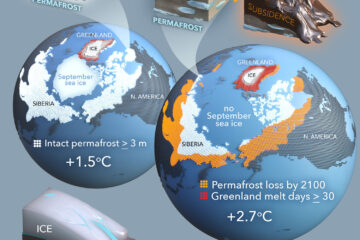Opinion: Managing for disturbance stabilizes forest carbon
Forest ecosystems sequester approximately 12% of anthropogenic carbon emissions, and efforts to increase forest carbon uptake are central to climate change mitigation policy. Managing forests to store carbon has focused on increasing forested area, decreasing area lost to logging and clearing, and increasing forest carbon density. Warming, drought, and wildfires challenge the stability of carbon stored in forests. By contrast, natural cycles of low-intensity fires in dry forests can, over the long term, promote forest carbon storage by protecting carbon in soil and in large, old trees. The conundrum is how to balance immediate, disturbance-driven carbon loss with long-term, stable carbon storage and account for these risks in policies for forest carbon management.


